Compsolechia is a genus of moths in the family Gelechiidae.

Dichomeris is a genus of moths in the family Gelechiidae erected by Jacob Hübner in 1818.
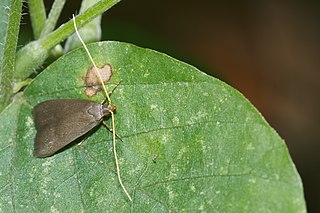
The Lecithocerinae are a subfamily of small moths in the family Lecithoceridae. They are found worldwide, but most species occur in South Asia. The subfamily is characterized by the male genitalia with a bridge-like structure connecting the tegumen and the valva, and the uncus almost always is vestigial with two lobes at the dorsal base, only exceptionally united into a broad plate, but never as a thorn or spine.

Macrobathra is a genus of moths in the family Cosmopterigidae. Most species are endemic to Australia.

The Oecophorinae are the nominate subfamily of moths in the concealer moth family (Oecophoridae). They are part of the insufficiently studied superfamily Gelechioidea, and like their relatives, the circumscription of this taxon is disputed.
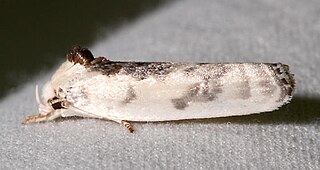
Antaeotricha is a genus of moths. It is the largest genus in the subfamily Stenomatinae, numbering over 400 species in the Western Hemisphere.

Xyloryctidae is a family of moths contained within the superfamily Gelechioidea described by Edward Meyrick in 1890. Most genera are found in the Indo-Australian region. While many of these moths are tiny, some members of the family grow to a wingspan of up to 66 mm, making them giants among the micromoths.
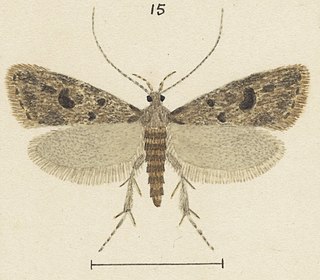
Gymnobathra ambigua is a species of moth in the family Oecophoridae. It is endemic to New Zealand. This species has been classified as critically endangered by the Department of Conservation.
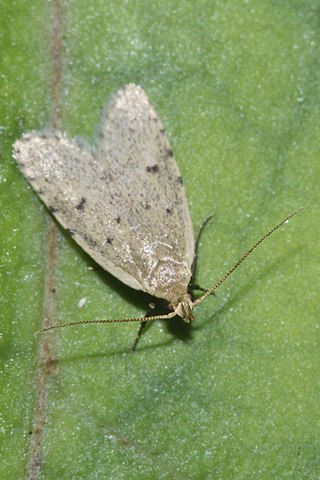
Gymnobathra calliploca is a moth of the family Oecophoridae. It was described by Edward Meyrick in 1883. It is endemic to New Zealand.
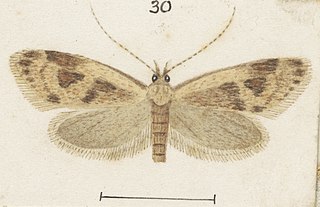
Gymnobathra cenchrias is a moth of the family Oecophoridae. It was described by Edward Meyrick in 1909. It is found in New Zealand.
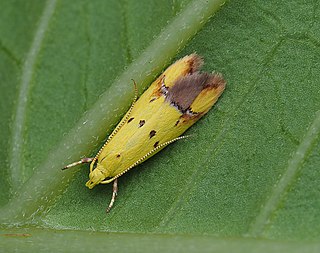
Gymnobathra flavidella is a species of moth in the family Oecophoridae. It is endemic to New Zealand. The host plants for the larvae of this species include Brachyglottis repanda and Gahnia procera.

Gymnobathra hyetodes is a moth of the family Oecophoridae. It was described by Edward Meyrick in 1884. It is found in New Zealand.

Gymnobathra inaequata is a moth of the family Oecophoridae. It was described by Philpott in 1928. It is found in New Zealand.
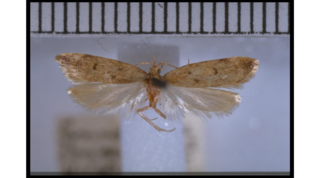
Gymnobathra levigata is a moth of the family Oecophoridae. It was described by Philpott in 1928. It is found in New Zealand.

Gymnobathra callixyla is a moth in the family Oecophoridae first described by Edward Meyrick in 1888. It is endemic to New Zealand.
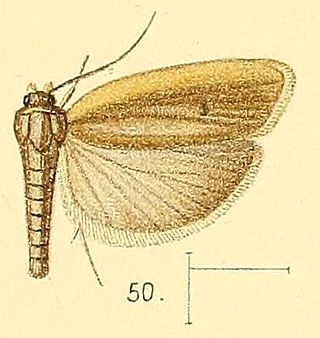
Stenoma is a genus of moths. The type species is Stenoma litura, which was described by Philipp Christoph Zeller in 1839.

Gymnobathra is a genus of moths in the family Oecophoridae. It was first described by Edward Meyrick in 1883. All species are found in New Zealand.
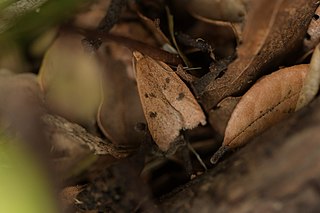
Gymnobathra sarcoxantha is a moth in the family Oecophoridae first described by Edward Meyrick in 1883. It is endemic to New Zealand. It has been hypothesised that this species likely belongs to another genus.

Gymnobathra tholodella is a species of moth in the family Oecophoridae first described by Edward Meyrick in 1883. It is endemic to New Zealand. It has been hypothesised that this species likely belongs to another genus.


















